Choosing the Right Running Shoes: A Beginner’s Guide
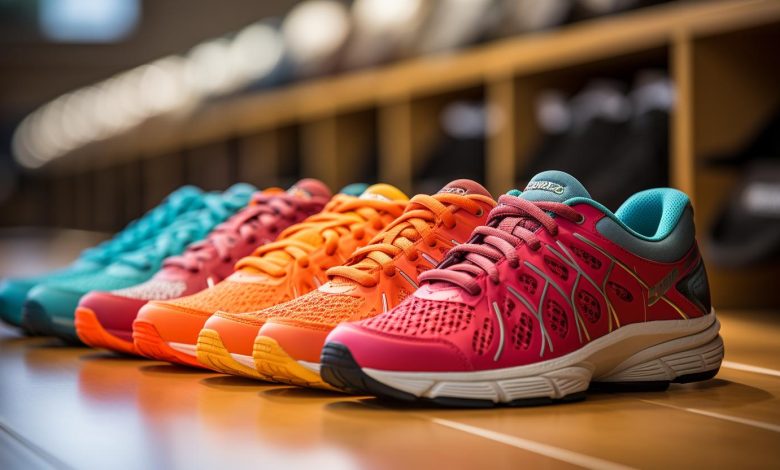
Imagine yourself lacing up your brand new running shoes, ready to hit the pavement and embark on a journey towards improved fitness.
But wait! Have you chosen the right pair for your needs?
In this beginner’s guide, we will equip you with the knowledge and expertise to navigate through the vast world of running shoes.
From understanding your foot type to exploring different types of cushioning and support, we’ve got you covered.
Get ready to make an informed decision that will elevate your running experience.
Understanding Your Foot Type

To determine your foot type, you’ll need to examine the arch of your foot. The arch is the curved part on the inside of your foot that helps distribute weight and absorb shock while walking or running. Understanding your foot type is crucial when choosing the right running shoes because it can help prevent common foot problems and ensure proper arch support.
There are three main types of foot arches: high arches, normal arches, and flat feet. High arches occur when there is a noticeable upward curve in the middle of your foot. People with high arches tend to have less surface area in contact with the ground, which can lead to increased pressure on certain areas of the foot. This can result in issues such as plantar fasciitis or shin splints.
On the other hand, flat feet occur when there is little to no visible curvature in the middle of your foot. This means that more of your foot comes into contact with the ground during each step. Without proper support and cushioning, flat-footed individuals may experience overpronation, where their feet roll inward excessively while walking or running. This can contribute to conditions like Achilles tendonitis or knee pain.
Regardless of whether you have high arches, normal arches, or flat feet, choosing running shoes with proper arch support is essential for preventing these common foot problems and ensuring a comfortable fit. Running shoes with built-in stability features or orthotic inserts can provide added support for those with high arches or flat feet by distributing weight evenly and reducing excessive pronation.
In conclusion, understanding your specific foot type is crucial when selecting running shoes as it directly affects how well they will support you during exercise. By examining the shape and curvature of your arch, you can identify any potential imbalances that might cause common foot problems down the line. Investing in footwear that provides adequate arch support tailored to your individual needs will not only enhance comfort but also promote optimal performance and prevent injuries.
Determining the Right Shoe Size
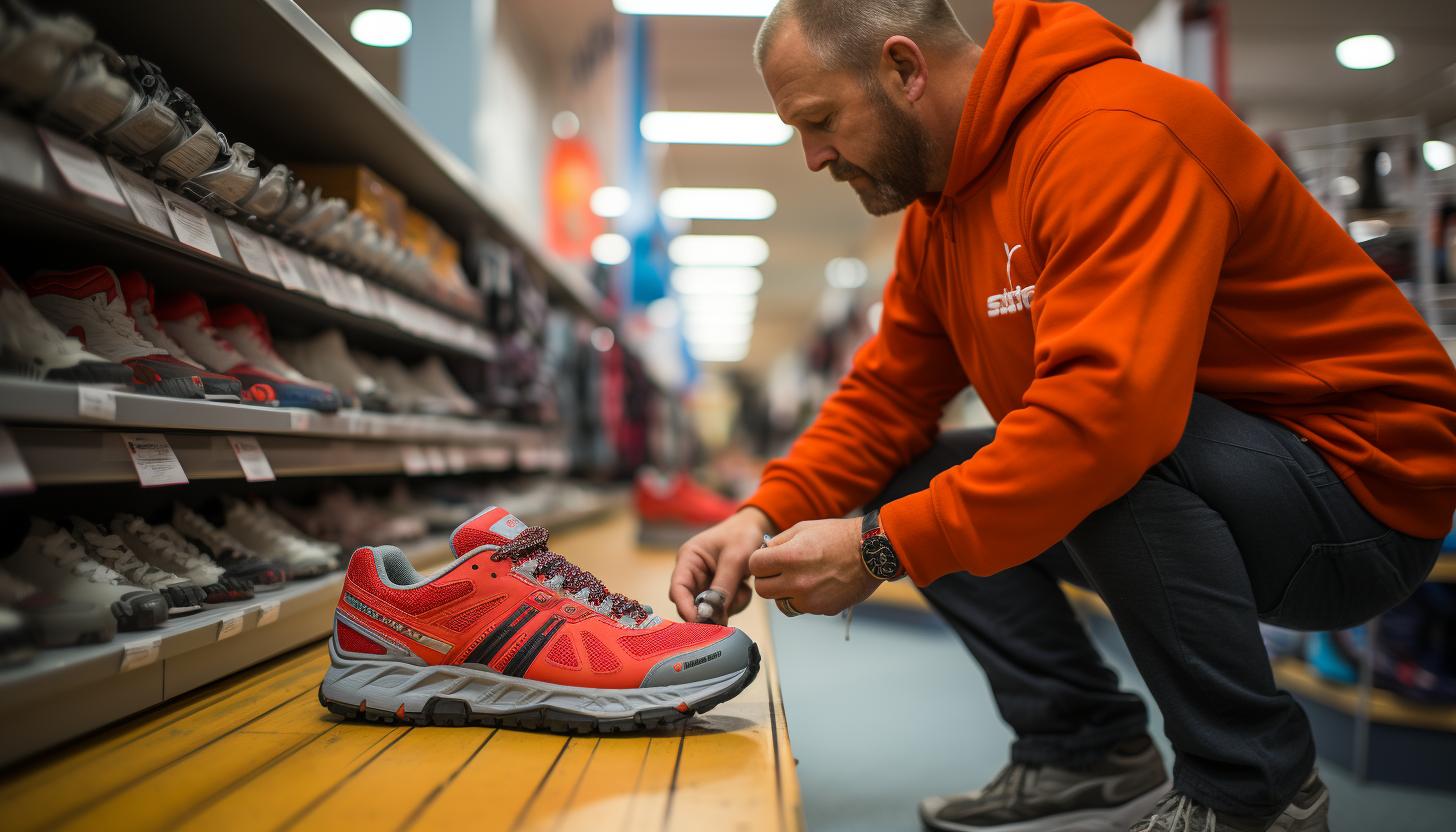
Finding the correct shoe size is essential when starting out as a runner. Proper shoe fit not only ensures comfort but also reduces the risk of injuries. To determine the right shoe size, it is important to follow accurate measuring techniques.
Firstly, make sure you measure your feet at the end of the day when they are slightly swollen. This will give you a more accurate measurement. Use a Brannock device or a foot measuring tool to measure both the length and width of your feet. Remember to measure both feet because they might differ in size.
Once you have obtained your measurements, refer to a sizing chart provided by running shoe manufacturers. Keep in mind that different brands may have slight variations in sizes, so it’s always recommended trying on shoes before making a purchase.
The importance of proper shoe fit cannot be overstated. Ill-fitting shoes can lead to blisters, calluses, and even more serious foot problems like plantar fasciitis or stress fractures. Inadequate space for toes can also result in issues such as ingrown toenails or bunions.
Considering Shoe Cushioning and Support
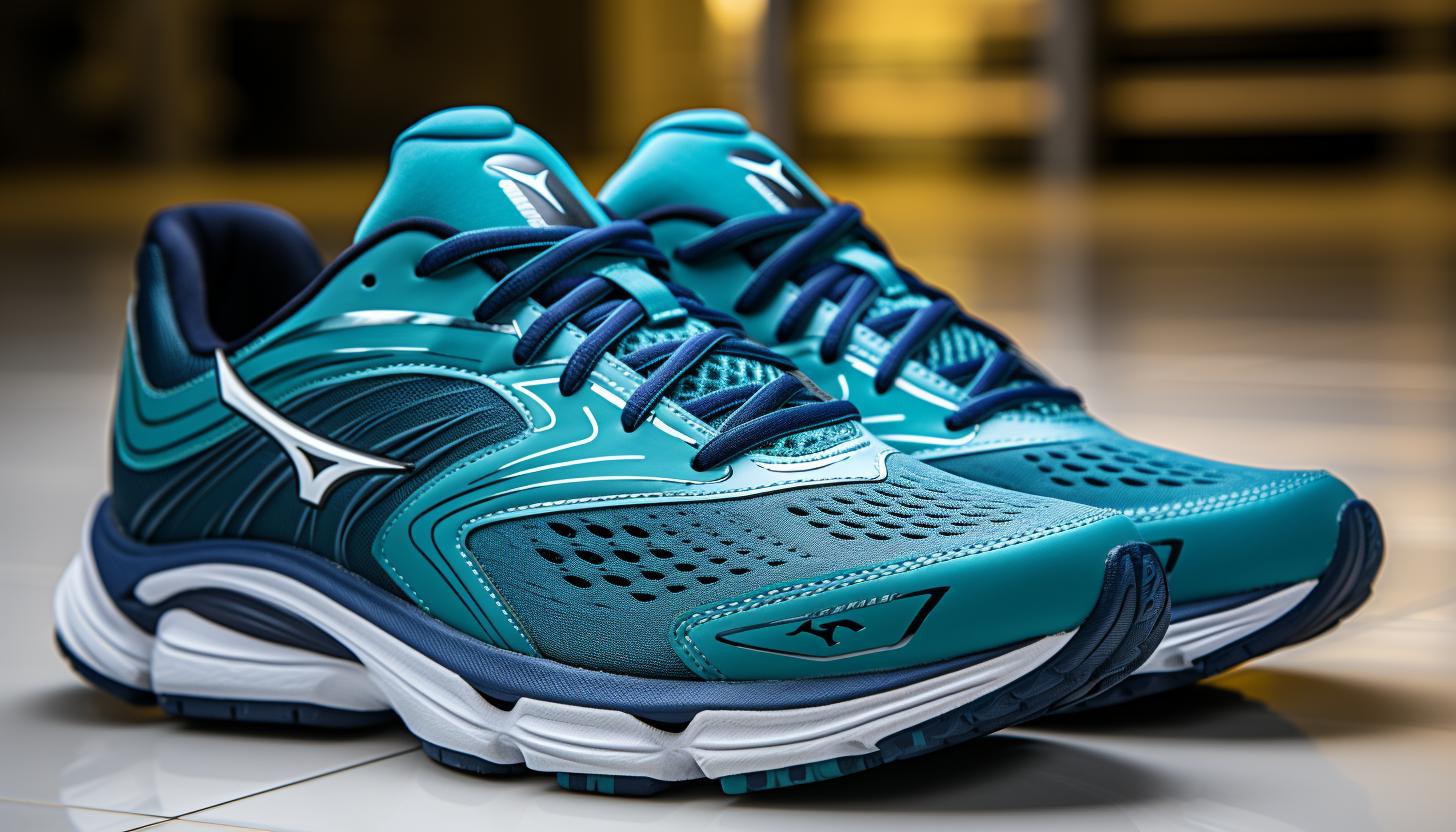
When selecting running shoes, it’s important to consider the level of cushioning and support that best suits your needs. The right cushioning can make a world of difference in your running experience, providing comfort and protection against impact. Similarly, proper support can help prevent injuries by promoting stability and alignment in your feet.
To help you visualize this, imagine the following scenarios:
1. Imagine running on a cloud: Picture yourself effortlessly gliding through the air with each step, feeling as if you’re floating on a soft, plush surface. This is what adequate cushioning feels like – absorbing shock and reducing stress on your joints.
2. Think of sturdy pillars: Visualize strong pillars supporting a structure. This represents the support system in running shoes that keeps your feet stable and aligned during every stride, preventing excessive pronation or supination.
3. Consider durability as armor: Picture durable shoes as protective armor for your feet. They withstand the wear and tear of daily runs, ensuring longevity and minimizing the need for frequent replacements.
4. Weighing down vs flying forward: Compare heavy shoes to carrying weights while running versus lightweight ones that allow you to move freely without hindrance or fatigue. Lighter shoes can enhance speed and performance by reducing energy expenditure.
Considering these factors will help you find the perfect balance between cushioning, support, durability, and weight when choosing your ideal pair of running shoes.
Exploring Different Types of Running Shoes
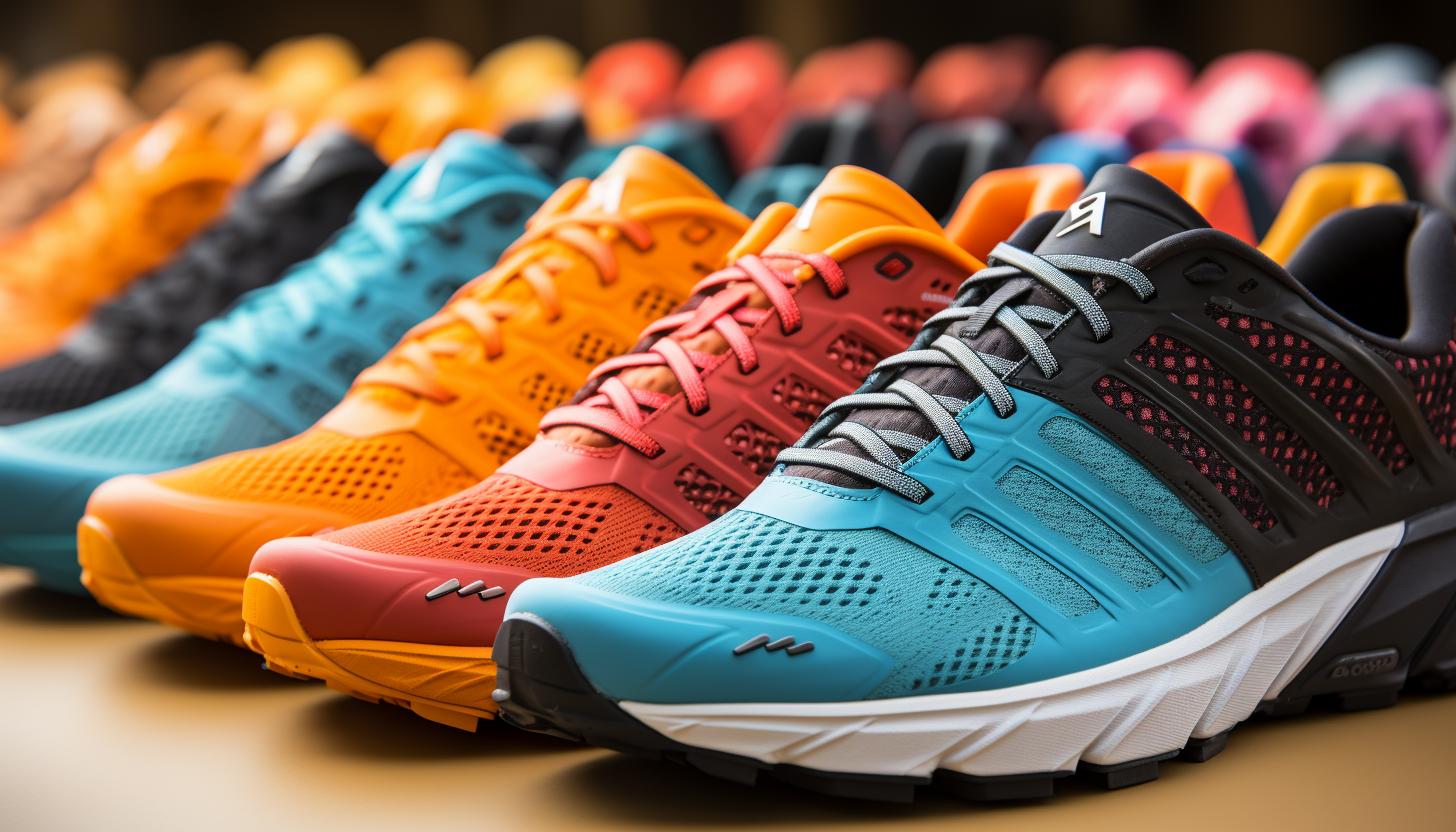
Take a moment to consider the various options available when exploring different types of running shoes. Choosing the right pair can significantly impact your running performance and overall comfort. Two key factors to consider are shoe durability and long-term performance, as well as the impact of shoe weight on your running performance.
To help you make an informed decision, here is a table comparing four common types of running shoes:
| Type | Cushioning Level | Support Level | Durability | Weight |
|---|---|---|---|---|
| Neutral | Medium | Low | Average | Light |
| Stability | Medium-High | Medium | Good | Moderate |
| Motion Control | High | High | Excellent | Heavy |
| Minimalist | Low | None | Poor | Ultra Light |
Shoe durability and long-term performance are crucial considerations for runners who engage in regular training or participate in races. Opting for shoes with excellent durability ensures that they can withstand the constant impact and stress placed on them during repetitive motion. Additionally, considering the impact of shoe weight on your running performance is essential. Lighter shoes typically allow for faster movement and reduced fatigue.
Tips for Trying on and Selecting the Perfect Pair
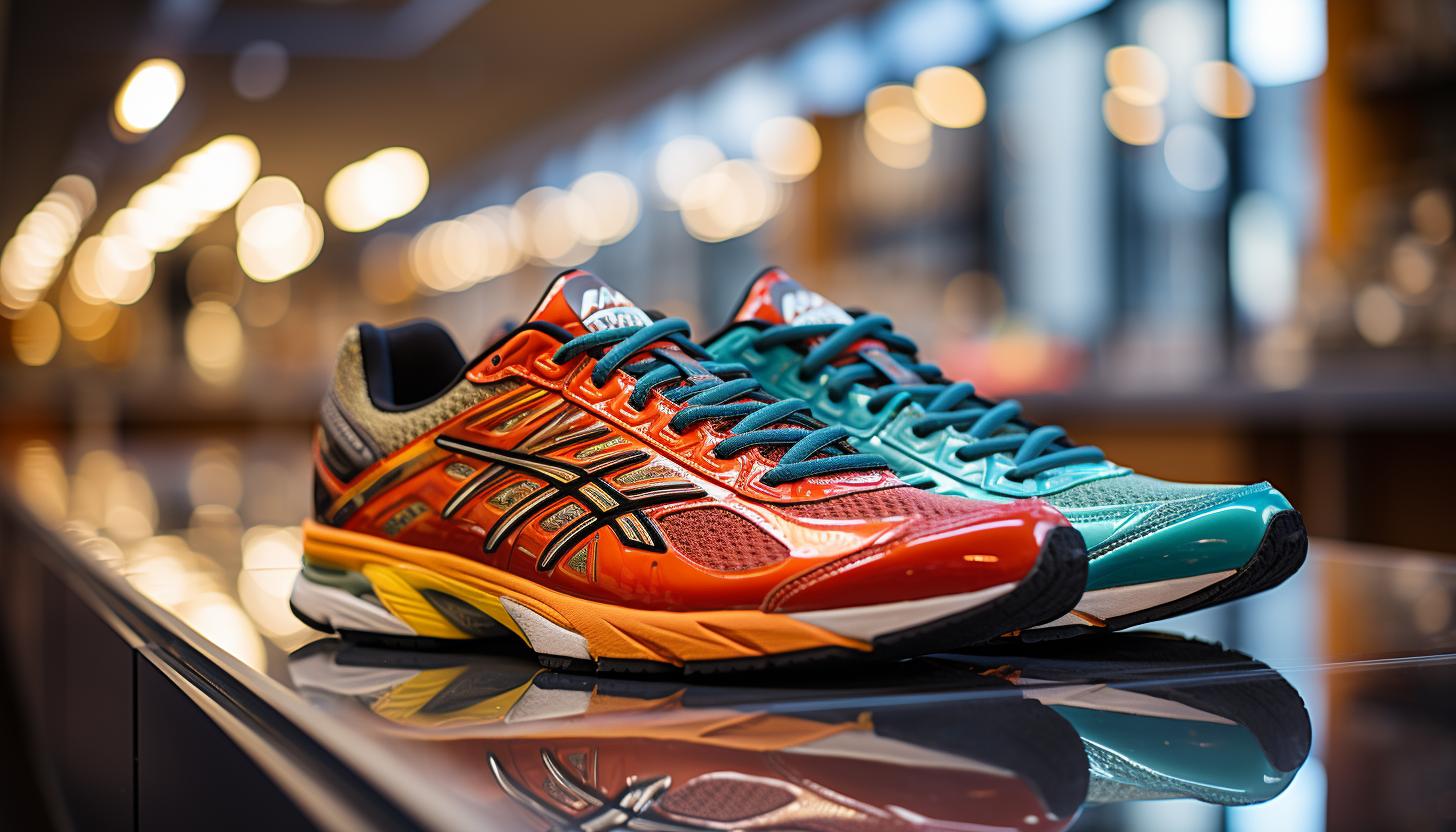
To ensure you find the perfect pair of running shoes, start by trying on different styles and sizes to see which ones provide the best fit and support for your feet. Choosing the right shoe brand is crucial in optimizing your running experience.
Here are some factors to consider when trying on shoes:
1. Cushioning: Look for shoes with adequate cushioning in the midsole to absorb impact and reduce stress on your joints. This will help prevent injuries and enhance comfort during runs.
2. Arch Support: Pay attention to how well the shoe supports your arches. If you have high arches, opt for shoes with more arch support, while those with flat feet may benefit from stability shoes with added support.
3. Toe Box Width: Ensure that there is enough room in the toe box area for your toes to move comfortably without being cramped or restricted. This will prevent discomfort and potential issues like blisters or black toenails.
4. Heel Counter Stability: The heel counter should be firm enough to keep your heel secure and stable during movement, reducing the risk of ankle sprains or instability.
By considering these factors, you can narrow down your options and find a pair of running shoes that not only fits well but also enhances your performance while minimizing any potential foot-related issues.
Conclusion
In conclusion, finding the right running shoes is essential for a beginner like yourself. Remember the wise words, ‘The right shoes can take you places.’
By understanding your foot type, determining the correct shoe size, and considering cushioning and support, you’ll be well on your way to enjoying a comfortable and injury-free running experience.
Explore different types of running shoes to find the one that suits your needs best. Don’t forget to try them on and select the perfect pair with confidence.
Happy running!






